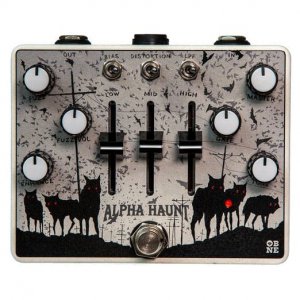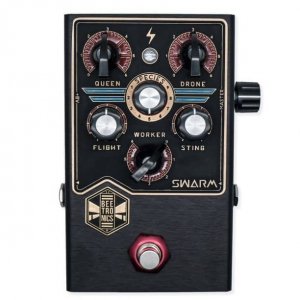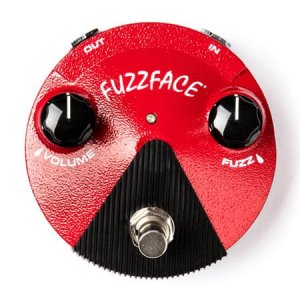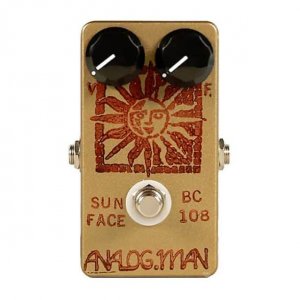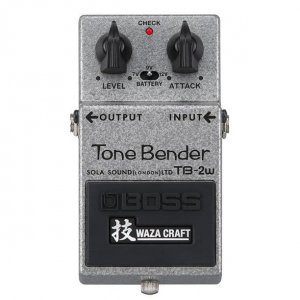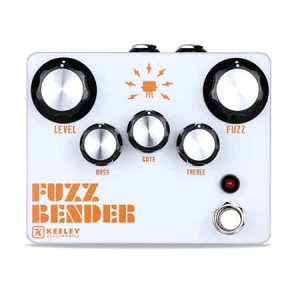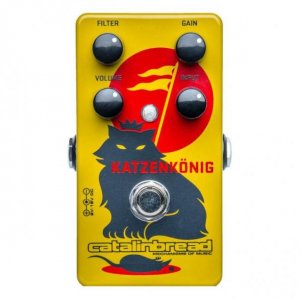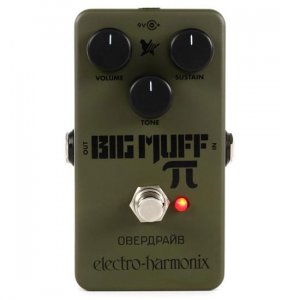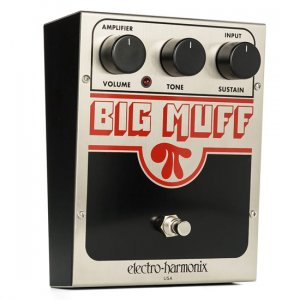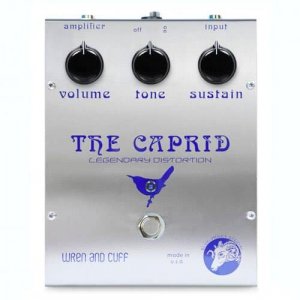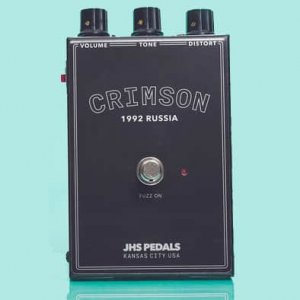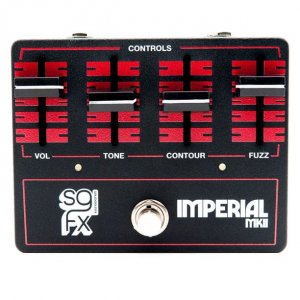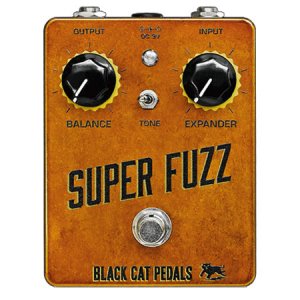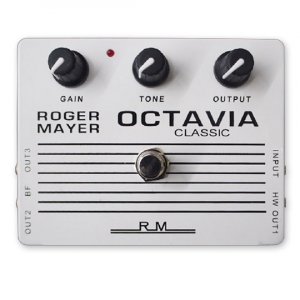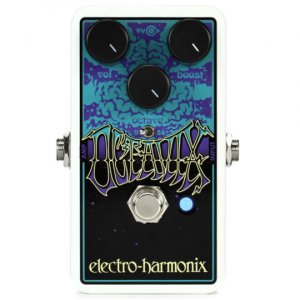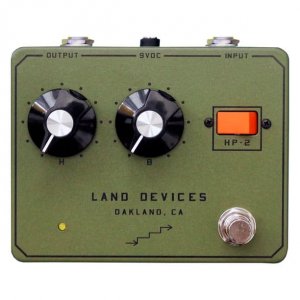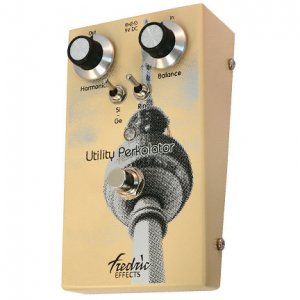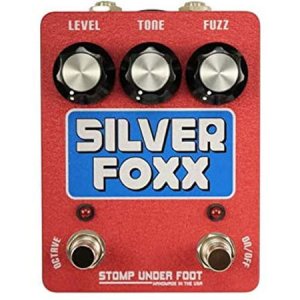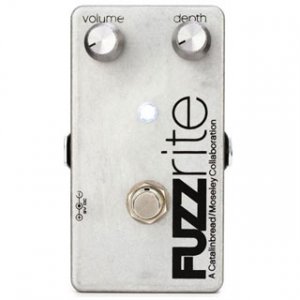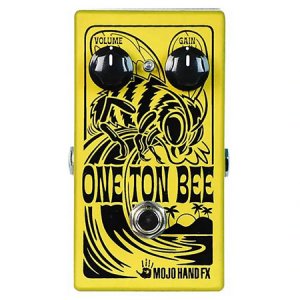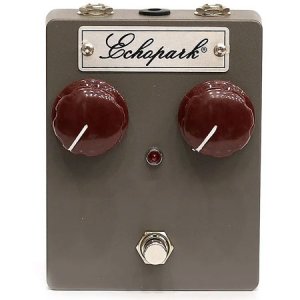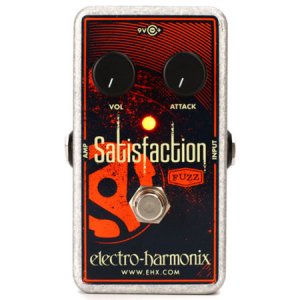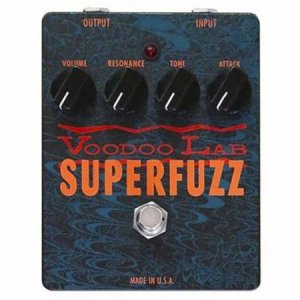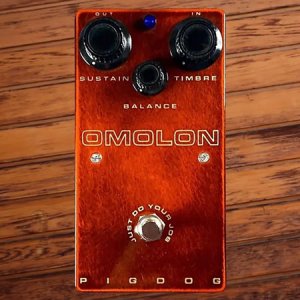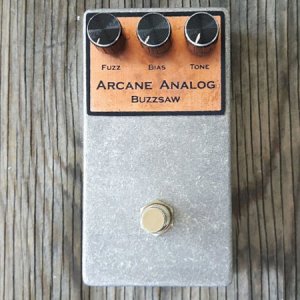This is a video about fuzz pedals we shot in 2022. It illustrates the tonal differences between 6 classic non-octave-up fuzz types.
This article features our selection of the best fuzz pedals of all time organized by circuit type. It’s a recap of all the comprehensive fuzz guides you can find on our site. These articles are updated several times a year based on sales numbers, new releases, and user reviews.
Best Fuzz Pedals: a Guide By Type

—
What is the Best Fuzz Pedal?
There isn’t one best fuzz pedal for all occasions… the best one is the one that gets you most excited, right now, or the one that works best in the song you are playing.
Any pedal lover knows that the history of fuzz started with a handful of early devices from the ’60s and early ’70s whose circuits and sound inspired most fuzzes to this day.
The Many Flavors of Fuzz
Even though the difference between a Tone Bender and a Fuzz Face may sound irrelevant to the non-converted, each fuzz circuit has its own character and sonic signature, and the variations from version to version, even among different batches of the same pedal built by the same company, are significant – not to mention the thousands of clones and evolution out there!
We actually shot a video comparing 6 classic circuits’ modern variants. Check it out on top of this post, it will give you a pretty good idea of the sonic range modern fuzzes can deliver (please note that the pedals in this video don’t include octave-up circuits).
With so many flavors of fuzz, finding a consensus about which one is the “best” fuzz is a fool’s errand. This is the reason why we feel like it’s not only pointless but actually misleading to compile an overall chart of the top 10 fuzz pedals of all time.
A more honest approach is to ask the question…
“How Do I Choose a Fuzz Pedal?”
To make an informed choice, it’s important to understand how the various fuzz circuits differ from each other sound-wise. The main two categories of fuzz hanker back to the ’60s and could be called “Classic” and “Octave Up” – with the latter being a version of the former with an added higher octave that confers the sound a more piercing edge.
Big Muffs are considered High Gain fuzzes, together with a few other circuits like the older Tone Bender models (and their clones). They offer a huge tone but famously lack in mids, which makes them less than ideal for solos.
Then there are Modern fuzzes, which represent a conglomerate of devices built by companies large and small that try to perfect the sound of those classics and, in some cases, add some experimental features.
Best Fuzz Pedals: Our Categories
In this article, therefore, we decided to highlight the most popular three pedals for each of the main fuzz types, in the hope that this approach will help you figure out which one works for you, and maybe convince you in exploring the fuzz world more in depth!
Here’s the list of the fuzz categories included in this guide.

For those interested in exploring each category more in-depth, at the bottom of these top 3 lists, you’ll find a link to a comprehensive article about that specific fuzz niche.
Best Crazy, Weird, and Unusual Fuzz Pedals
Initially, we thought about starting this article with the classic fuzz circuits and their clones – Tone Bender, Big Muff, Fuzz Face… but then something seemed wrong with that approach. As old as fuzz is, it’s a niche that’s still vibrant with innovation! There are companies out there that are putting out original fuzz circuits that are creative, weird and inspiring, without being pure clones of existing circuits. Let’s put them on top of this article! Here are 3 of the best boutique fuzz pedals with experimental features – you can find lots more here.
- Old Blood Noise Endeavors Alpha Haunt V2
Versatility is the forte of this eye-catching fuzz. With a 3-band EQ and controls for fuzz, compression, gating, parallel clean blend, and 3 voicing switches, the Alpha Haunt can be just about any kind of fuzz you want it to be. - Chase Bliss Zvex Bliss Factory
ZVEX’s classic gets the Chase Bliss treatment. All the controls of the original are here, plus a new resonant low pass filter knob, and two three-way toggles for fattening up the tone and setting auxiliary knob functions. Any parameter can be saved to a preset, and controlled by midi or expression pedal using the dip switches on the back. Not cheap but super-versatile. - Beetronics Swarm
Beetronics are known for their beautiful pedal design as well as their mastery of decadent fuzzy goodness. This synth-fuzz harmonizer lets you blend in 9 possible harmonies in 2 different octaves. Perfect for angular King Crimson-style harmonies or more modern Jack White-style square wave attack.
Full Article About Experimental Fuzzes
Go Back to List of Fuzz Categories
—
Best Fuzz Face Pedals
Listen to a vintage Fuzz Face.
With its two transistors, four resistors, three capacitors, and just two controls (Volume and Fuzz), the Fuzz Face is one of the simplest fuzz circuits there is, but also one of the most loved ones. Made famous by Jimi Hendrix, it produces a smooth, singing sustain and it’s more dynamically responsive than most fuzzes.
- Dunlop Mini Fuzz Face
The original Fuzz Face was not exactly pedalboard friendly, but Dunlop has shrunk the exact same circuit down to fun size for modern use. These come in several varieties, including germanium, silicon, Hendrix signature and Joe Bonamassa signature models. Purists can also still purchase the OG big case version. - Analogman Sun Face Fuzz NKT 275
One of the most widely loved and accurate Fuzz Face pedals, the Sun Face is hand made to order and has a bevy of NOS transistor options available, from germanium BARTs (Big Ass Russian Transistors) to the classic BC108 silicon. After Analogman ran out of the famous NKT275 transistors last year, their price has shot up. - ZVEX Fuzz Factory Vexter
Fuzz Face-inspired but an extreme makeover of the original, this original design replaces the vintage circuit’s resistors with four potentiometers and adds a preamp and a third transistor. The result is a unique (and popular) fuzz that squeals and ripped like velcro. The Vexter series contains the exact same circuit as the hand painted version at a more affordable price point.
Full Article about Fuzz Face Pedals
Go Back to List of Fuzz Categories
—
Best Tone Bender Pedals
Listen to a vintage Tone Bender.
Hairy, spitting, and aggressive the Tone Bender is a fuzz that, unlike the scooped Muff-style pedals, can make itself heard also in a dense mix. While it doesn’t clean up as nicely as other fuzzes, it has a unique compression and bloom when responding to pick attack. It found a place in music history thanks to players like Mark Ronson, Jeff Beck, Brian May, Ernie Isley, Syd Barrett, Kevin Shields and Jimmy Page.
- Boss TB-2W
With the help of Sola Sound, the originators of the Tone Bender, BOSS has created a faithful replica of a vintage Mark II model (serial number 500) as part of their Waza craft series. The TB-2W brings the Bender into the modern era with switchable buffered / true bypass, and a voltage switch that allow you to select 7v for starved gated fuzz, the standard 9v, or 12v for more headroom. - Keeley Fuzz Bender
An “extreme” evolution of the Tone Bender, the Keeley’s Fuzz Bender adds an active EQ after the three-transistor fuzz circuit for added versatility. With 20dB of gain at 100hz or 10khz, plus a voltage bias control, it allows you to create your own perfect hairy fuzz tone for any situation, from bass heavy stoner metal to octave-like Hendrix style effects. - Catalinbread Katzenkönig
Full Article about Tone Bender Pedals
Go Back to List of Fuzz Categories
—
Best Original Big Muff Pedals
Listen to a vintage Big Muff Pi.
The Big Muff has a unique place in the history of fuzz because it’s the only fuzz circuit that has consistently been produced by the same company (Electro-Harmonix) since its mid-’60s inception and, at the same time, the one that saw the most in-house variants and evolutions. We actually let the NYC-based company compile this list since they know a thing or two about Big Muffs!
- Ram’s Head-Big Muff Reissue
The most coveted of all the Muffs, the early 70s Ram’s Head was used by David Gilmour for his epic, singing lead tone. The Ram’s head is articulate and very loud, with a bit of vintage spittiness. - Green Russian Big Muff Reissue
The Russian Muffs are coveted by bassists and heavy players for their big, boosted low end. They are very smooth and have slightly less gain than the other Muffs. If you’re worried that a vintage Russian has some special unobtanium in it, don’t be. These circuits are identical to the 90s versions. - Big Muff Pi
The current iteration of the classic Big Muff is affordable, iconic, and the best-selling Muff of all time. The sound is very smooth and versatile, lending itself equally well to garage rock, punk, and metal. Everyone should own one!

Full Article about Big Muff Pedals
Go Back to List of Fuzz Categories
—
Best Big Muff Clones
There were so many Big Muff releases over the years that a sub-fauna of clones of discontinued models has slowly emerged. Catering to a restricted circle of fanatics, these are boutique devices that tend to have a higher price tag than the originals because – in most cases – they are hand-built and feature better components.
- Wren and Cuff Blue Caprid
Matthew Holl of Wren and Cuff is a Muff expert, and the Caprid is his tribute to the coveted early 70s Ram’s Head Muffs. He referenced four versions of the circuit and combined what he believed to be the best parts of each to create this replica. Even the circuit board and the enclosures are the exact replicas. - JHS Crimson Fuzz
A replica of one of Josh Scott’s own vintage Red Army Overdrives from the early 90s. Despite being called an overdrive, this was the first Muff Mike Matthews made in Russia. Like all of the fuzzes in the lineup, the crimson has a special “JHS Mode” button which in this case activates a mid frequency boost. - SolidGoldFx Imperial MKII
MkII of this fuzz inspired by the vintage Jumbo muff by JEN Electronica, with an added germanium noise gate. MkII retains the high impedance JFET preamp for low noise floor detail and definition but adds a new Contour slider in place of the mids switch to adjust the frequency of the high-pass filter and boost or scoop your mids.
Full Article About Big Muff Clones
Go Back to List of Fuzz Categories
—
Best Super-Fuzz Pedals (Octave-Up)
Listen to a vintage Univox Super-Fuzz.
“Brutality” is a word that gets some appreciation in the world of fuzz pedals – together with “gnarl,” of course. The Super-Fuzz, originally designed by Honey/Shin-Ei, is the most well-known of the octave-up fuzzes, and its uncompromising tone triggers descriptions of that kind. Its aggressive sound is delivered through a two-germanium diodes circuit and full-wave rectification, and the octave-up becomes more dominant the higher you turn the gain knob.
- Honey Baby Crying FY-6 Super Fuzz
Being a reissue of the original, released by the same company that launched the Super Fuzz, this model is as close as it gets to the vintage units. (“Honey Co. Ltd” is the original creator of the pedal). It features the same circuit and high-quality parts as the ’67 unit, including NOS carbon comp resistors and Matsushita/Panasonic transistors. At almost $500 it may break some budgets. - Black Cat Super Fuzz
The Black Cat is an excellent option if you simply want a modern version of the FY-6 circuit. Built in the U.S. with NOS germanium diodes, metal film resistors and audio grade capacitors, the Black Cat Super Fuzz doesn’t try to do anything but provide you with a reliable version of the classic Super Fuzz sound. - JPTR Add Violence
Named after the appropriately cacophonous Nine Inch Nails EP, it uses high gain transistors and vintage Russian NOS germanium diodes to produce brutal clipping results. The huge bass boost available makes it perfect for heavy music, but a diode switch can be engaged to access rich and creamy vintage fuzz tones. Three internal trim pots allow to tweak the upper octave effect, change the amount of clean blend in the signal, and add up to 16db of boost.
Full Article About Super-Fuzz Pedals
Go Back to List of Fuzz Categories
—
Best Octavia Fuzz Pedals (Octave-Up)
Listen to a vintage Roger Meyer Octavia Fuzz | Listen to the Tycobrahe Octavia Fuzz.
Designed in 1967 by Roger Meyer specifically for Jimi Hendrix, the Octavia is based on a circuit using ring modulation and frequency doubling to create an octave above the signal, sending the results to a fuzz. Since the tracking system can only detect single notes, chords won’t work with this pedal, and it will work best on notes played above the 10th fret.
- Roger Mayer Octavia Classic
The sound is the same as its rocket sibling, but it features a more compact case, a Tone knob placed between the drive and the octave stages for extra flexibility, and a true hard wire output plus two buffered outputs that can drive long cable lengths with no high frequency loss. - Chicago Iron Octavian
Same circuit as the as the Tycobrahe Octavia, the Octavian adds an LED. - Electro-Harmonix Octavix
Mike Matthews was one of Jimi Hendrix’s closest friends, so you can be sure EHX knows how to do octave fuzz. Their Octavix is a great-sounding Octavia clone with an added control for the level of the octave up, for a more flexible, and yet affordable, take on this circuit.
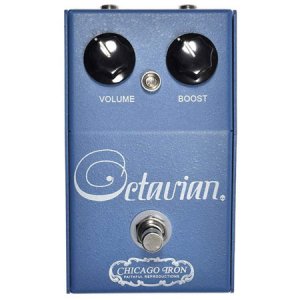
Full Article About Octavia Pedals
Go Back to List of Fuzz Categories
—
Best Maestro FZ-1 Fuzz Tone Clones & Variants
Listen to a vintage Maestro FZ-1.
The Maestro FZ-1 was the very first fuzz ever released commercially, back in 1962. It can be famoult heard in the immortal riff of The Rolling Stone’s Satisfaction. With its three germanium transistor circuit with RCA 2N270 devices, it was very temperature-sensitive, but maintained a brass-like quality and a more polished tone compared to other devices in this list.
Full Article about Maestro Tone Pedals
Go Back to List of Fuzz Categories
—
Best Harmonic Percolator Fuzz Pedals
Listen to a vintage Harmonic Percolator.
The Harmonic Percolator HP-1 was created by a small Milwaukee company in the ’70s, but raised to prominence twenty years later when producer Steve Albini made a name for himself recording iconic alt-rock artists like Pixies, Nirvana and PJ Harvey (among many others) and started telling folks how much he loved that pedal. Based on a silicon and a germanium transistor circuit, the HP-1 produces a distinctive sound that is often described as a blend of fuzz and distortion.
Full Article Harmonic about Percolator Pedals
Go Back to List of Fuzz Categories
—
Best Foxx Tone Machine Clones & Variants (Octave-Up)
Listen to a vintage Foxx Tone Machine.
Warm and thick-sounding, and with a controllable octave-up effect, the Foxx Tone Machine was introduced in 1972, and came in a rectangular shape covered by a striking furry enclosure available in several different colors. It was designed by the man who went on to become the founder of guitar and pedal company Danelectro.
Full Article about Foxx Tone Pedals
Go Back to List of Fuzz Categories
—
Best Mosrite Fuzzrite Clones
Listen to a vintage Mosrite Fuzzrite.
The Mosrite Fuzzrite is definitely a contender for the gnarly fuzz crown. Raw and buzzy, it was introduced in 1966 by Californian company Mosrite upon request of the beat band The Ventures, but became immortalized in the recording of the Stooges’ I Wanna Be Your Dog. The circuit blends in a 2nd gain stage through the Depth knob, allowing this circuit to deliver a range of tones from trashy distortion to full-on fuzz with hints of upper octaves.
Full Article about Fuzzrite Pedals
Go Back to List of Fuzz Categories
—
Best Jordan Boss Tone Clones
Listen to a vintage Jordan Boss Tone V3.
OK, OK, the original Boss Tone was NOT a pedal, but a little box that would go directly into your guitar plug. But it was a fuzz, and a pedal version of it came out, eventually. Its circuit, comprised of two transistors and two capacitors, produced a wide range of fuzzy tones with long sustain, from smooth to piercing, often carrying a hint of a lower octave.
Full Article about Boss Tone Pedals
Go Back to List of Fuzz Categories
—
Best Baldwin Burns Buzzaround Clones
Listen to a vintage Burns Buzzaround.
Another mid ’60s fuzz (1966, to be precise), but one that remained semi-obscure, having lost the battle with its intended competitor, the Sola Sound Tone Bender. Its circuit, based on a 3 NKT213 Germanium transistors design, is quite similar to that pedal, with slightly different controls – including what’s in all likelihood the first Tone knob in the history of pedals! It’s an effect that cuts through thick mixes thanks to its tight low end, strong mids, and prolonged sustain.
Full Article about Burns Buzzaround Pedals
Go Back to List of Fuzz Categories
Relevant Videos about Fuzz Pedals
The History of Fuzz Pedals in 4 Minutes (Guitar Nerds)
5 Levels of Fuzz (Rhett Shull)
The Origins of Fuzz (The JHS Show)
A Guide to Choosing a Fuzz Pedal (Reverb.com)
How to Find the Fuzz You Need (The JHS Show)
5 Best Fuzz Pedals Under $100 (Thomann)















